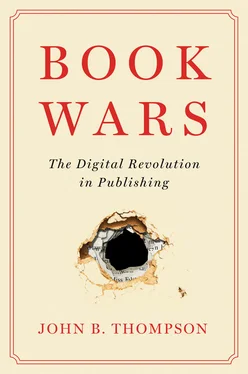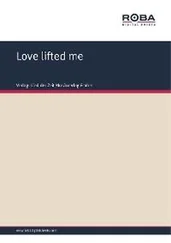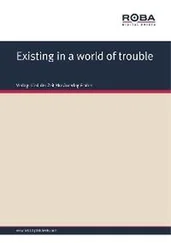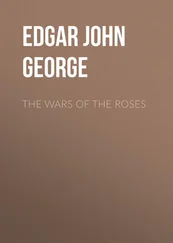These two problems – visibility (or rather invisibility) and price (or rather the downward pressure on price) – worked against a publisher like Touch Press, which positioned itself at the quality end of the app marketplace. Touch Press was committed to developing premium apps, which require a great deal of time, expertise and expense to produce – in the case of Disney Animated, around ten people worked on this app pretty much full-time over a period of eight months, with a development budget of £400,000. They had to be able to sell this app in a quantity that numbered in the hundreds of thousands, and at a price that was well above the very low prices at which most apps are sold. They had everything going for them on this occasion, and they simply couldn’t generate enough revenue to cover their costs and provide the additional funds you need to make a business work: ‘We tested the model exquisitely well and it doesn’t work.’
So where could they go from here? What were their options? One was to scale back, let some staff go, produce apps of much lower quality, charge a lot less for them and hope you can make the business work on a smaller budget. But to Max and Theo, that felt like an admission of failure. They started this business in the belief that they could create something genuinely new, help to invent a new kind of publishing and a new kind of book – the book-as-app – that would bring important works to life on a digital device as a rich audio, visual and textual experience. To scale back now would almost certainly mean that their ability to produce apps of this kind and quality would be seriously compromised. They might be able to make small savings here and there and produce their apps for less – maybe 10 or 20 per cent less – but they couldn’t cut more than that and still produce apps of the kind of quality that was their trademark. Producing cheap apps that got the job done but had no real aesthetic value was not the kind of business they wanted to be in. They would also risk losing their best staff, who may not want to stay at a company that was downsizing and couldn’t afford to pay top rates.
Another option was to try to re-orient the business – to ‘pivot’, as they say in the world of start-ups. They could move more into agency work, for example, selling services to other businesses rather than, or in addition to, developing apps for individual consumers. They’d developed a set of technical skills that could be used to develop apps for companies and other organizations that were seeking to promote a product or build their brand. This had the potential to generate significant revenue and produce good margins, provided that your negotiating position was strong enough to enable you to charge a fee based on a substantial mark-up of 50 per cent or more from your actual costs. They could build on the reputation they’d established as a high-end app developer – ‘cash in’ their accumulated symbolic capital – to try to turn the company into a profitable business. The potential gains would be financial: it might enable them to generate sufficient revenue at a sufficient margin to turn the organization into a profitable business. The downside would be the loss of creative control. ‘I know that once you take on one of those commissions you find that you have absolutely no freedom of choice but to deliver the project to the highest possible quality on time, and you have to put your best people on to it to do that’, reflected Max. ‘And ultimately, if the client wants something, that’s what the client gets. So there’s much less room to do the new, totally different kind of work that we’ve tried to do. I just couldn’t see something like The Waste Land ever coming out of that kind of work.’
In the course of 2014, it became increasingly clear that the company would need to do something. They couldn’t continue to produce these big, beautiful apps, put their heart and soul into them, and hope for success: they would simply run out of cash. The Board brought in a new CEO who had a background in business development, and her remit was to cut the losses and make the business profitable. The company moved premises to a stylish suite of offices in central London, subtly altered its name from Touch Press to touchpress and tried to build up the agency side of the business. Relations between the principals of the old Touch Press and the new management cooled, Max stepped down from the Board and he and Theo began to put their energies into other things. The agency business didn’t pan out for the rebranded touchpress, and by early 2016 the company was in serious trouble. The new CEO was fired and the company sold its portfolio of science and literature apps to a new, venture capital-backed publisher in the educational content market, Touch Press Inc., that was formed through the collaboration of the Irish digital publisher StoryToys and the educational games specialist Amplify Games. Rebranded as Amphio, it was announced that the new venture would focus on developing interactive tools and content for educational and cultural institutions. The bold attempt to create a new kind of publishing by building beautiful apps for the general consumer that made full use of the technical possibilities opened up by the iPad was effectively at an end.
For Max and Theo, the two creative driving forces behind Touch Press, it was a disappointing realization. They’d set out six years earlier with the aim of creating a completely new kind of ebook, a book-as-app that worked in ways that were completely different from the printed book and that engaged the reader/user in a rich, multi-layered, multimedia experience, and with the aim of building a business that would enable them to sustain this creative activity. They succeeded in the former but not in the latter. ‘I think we’ve shown that the medium is capable of creating a really strong engagement between the subject and the reader’, reflected Max; ‘I think we’ve shown that the material has a way of inspiring somebody who has an interest in a subject and giving them the best possible way of exploring it.’ But he had to accept that the model didn’t work in the end. There was a brief moment in the two to three years after the iPad had been introduced when it was possible to produce a beautiful app and get people to pay $10 or $15 for it, and you could build a publishing venture around it. But that moment is now over. ‘It was a brief moment that opened and closed and I’m delighted it happened because it allowed us to take some steps forward in the long-term development of interactive media. But as a business venture it just didn’t work.’ 11
The period from 2010 to 2015 witnessed a flurry of ambitious new publishing ventures that were riding the wave of the digital revolution, seeking in different ways to re-invent the book for the digital age – Touch Press was one of the most original and ambitious of these but they were just one of many. What ‘re-inventing the book’ meant varied greatly from one venture to the next – it was the sheer openness of what it could mean that was part of the excitement of the time. For some, it was a matter of experimenting with the length of what was normally regarded as ‘a book’: liberated from the need to produce texts of a certain extent to be long enough for the purposes of producing a conventional physical book, it now seemed possible to re-invent the book as something much shorter, something that could be written quickly and read in a single sitting, something much closer to a short story or a long article – the e-single or digital short. For others, re-inventing the book meant something more radical: it meant thinking of ‘digital books’ as something other than digital replicas of print books, something other than digital images of static text that can be read on a screen rather than on paper, something other than ‘vanilla ebooks’. Rather, it meant experimenting not just with the length of the text but with its very form: use the digital medium and all the technical possibilities afforded by it to think in new ways about what ‘a book’ is. Don’t take for granted the form that has been bequeathed to us by 500 years of print-on-paper, as if the only thing that the digital revolution could do for the book was to make the same text available on screen, rather than as a physical object. Take the opportunity afforded by the digital revolution to create something entirely new where text is interwoven with music, spoken words, images and video, where text is no longer static but fluid, where readers become part of the very story they are reading and where the story comes alive in ways that were just not possible in the old static world of printed text. Such was the promise of the digital revolution: the dawn of a new age in the long history of the book when the very form of the book, and the very nature of what ‘a book’ is, could be re-invented from scratch.
Читать дальше












